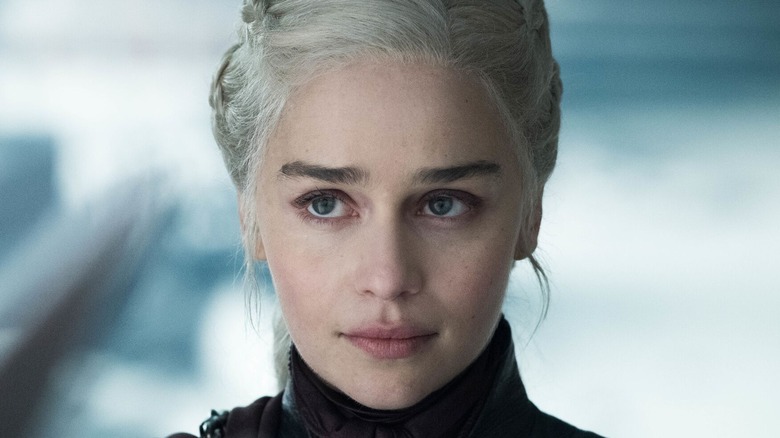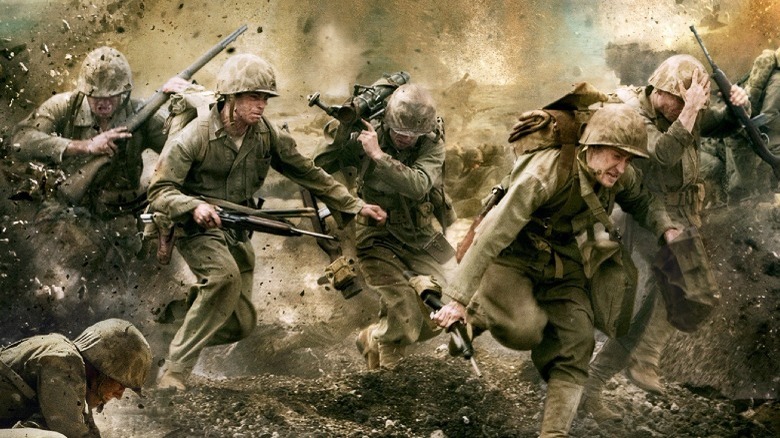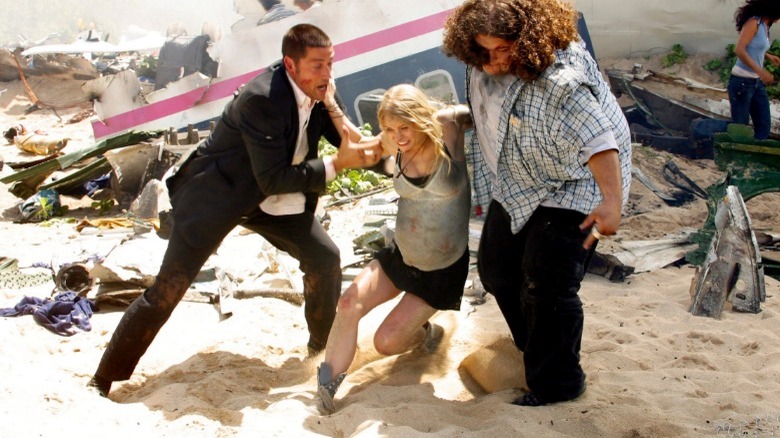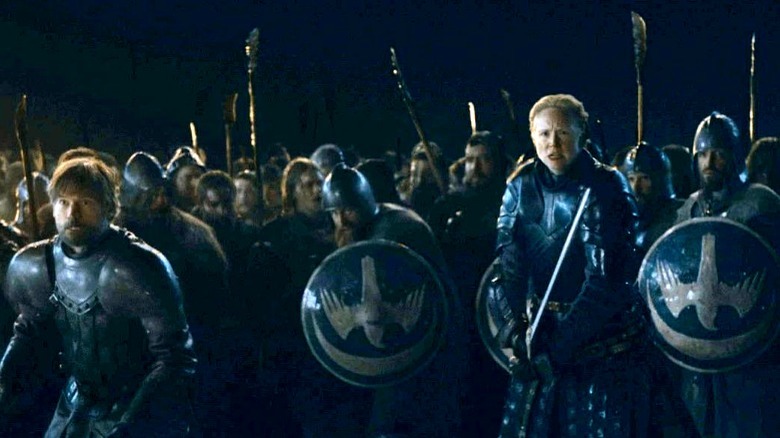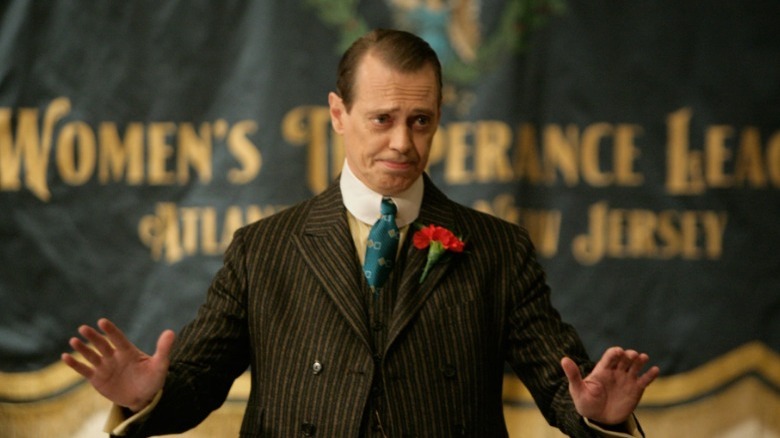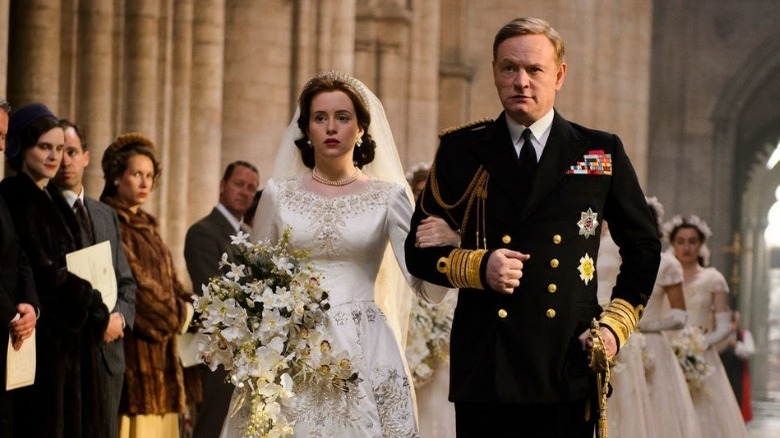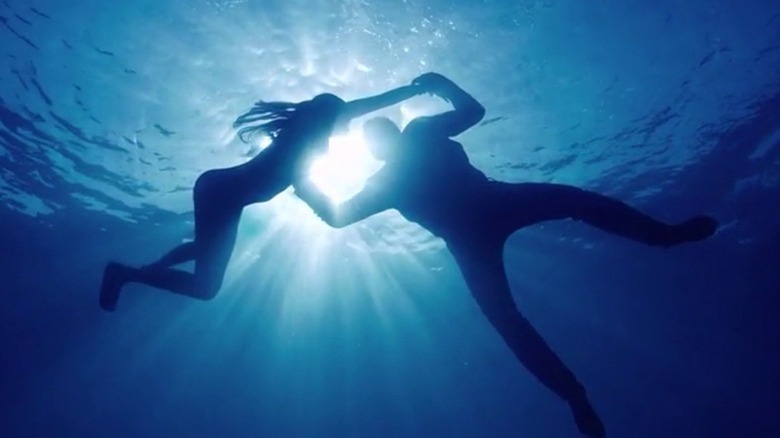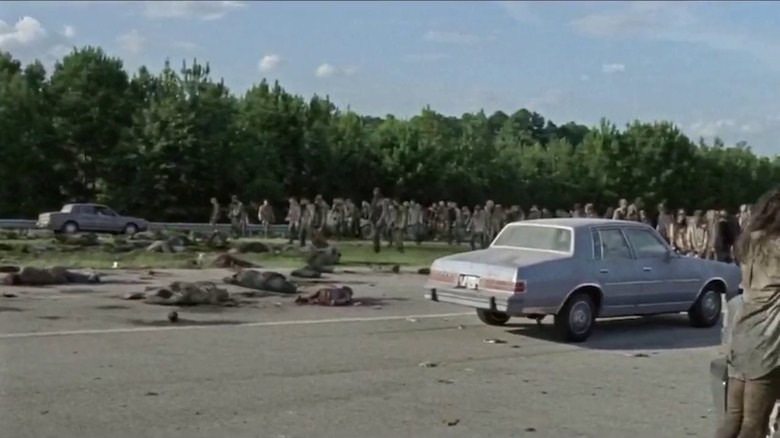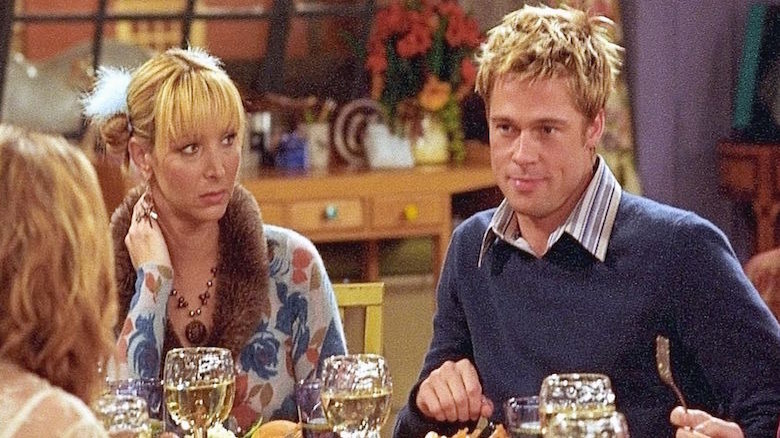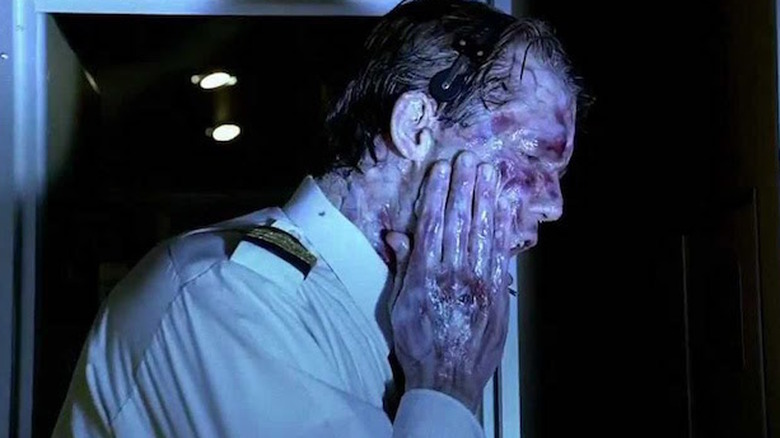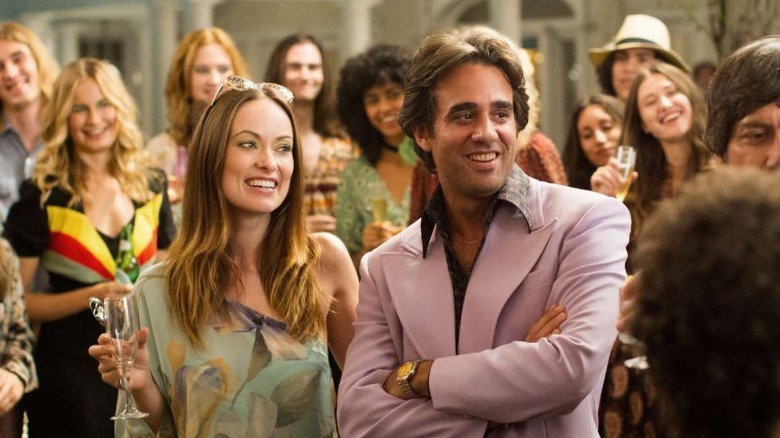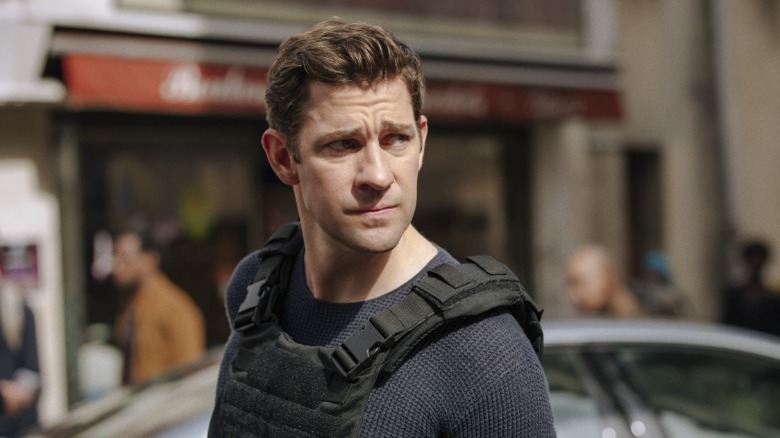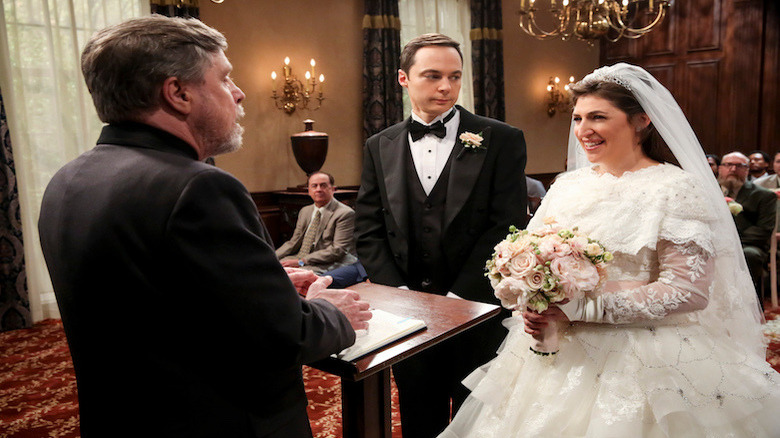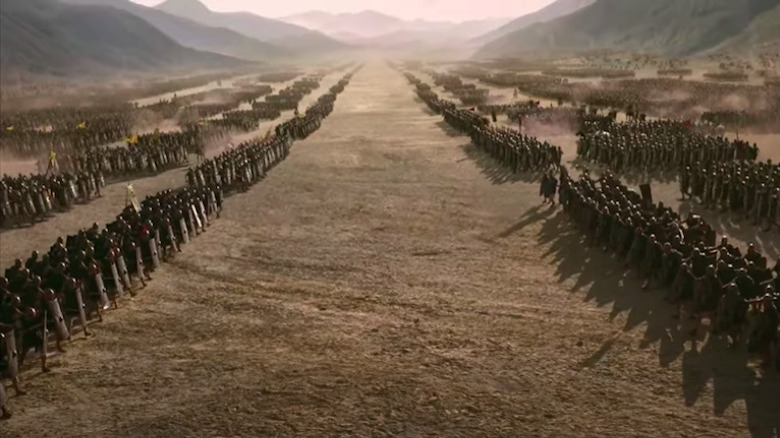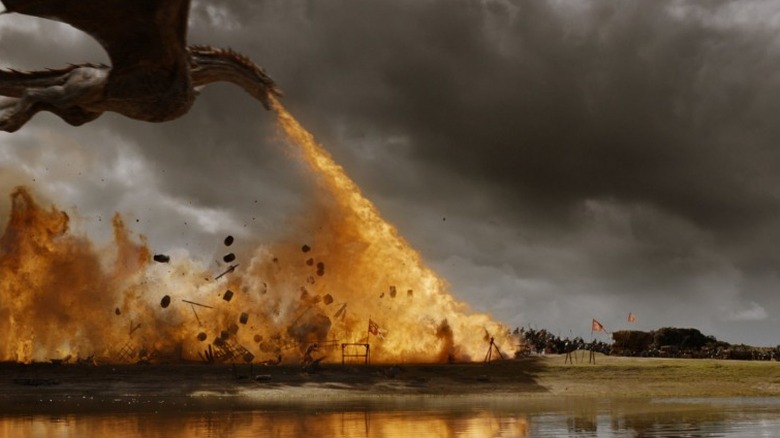The Most Expensive TV Scenes Ever Filmed
Big budgets used to be the preserve of major Hollywood films, with blockbusters such as "Titanic" and "Terminator 2: Judgment Day" spending hundreds of millions of dollars on set design, special effects and actors' salaries. But that was before the so-called Golden Age of Television, which started in the late 1990s and arguably continues to this day. This era — noted for series such as "The Sopranos," "Mad Men," "Game of Thrones," and "Breaking Bad" — has ushered in a new cinematic aesthetic.
Stagey sets and bland camerawork have been replaced by elaborate set pieces, pioneering special effects, and beautiful cinematography. Casts have grown in size and stature, too, attracting some of Hollywood's biggest stars who are keen to be part of this iconic cultural moment. TV has never been this good — or this expensive. Here are some of the most eye-wateringly expensive scenes ever shot for the small screen.
Beach landing - The Pacific
At $217 million, "The Pacific" is the most expensive miniseries ever made. Its depiction of the Peleliu beach landings alone cost $5 million, a figure that becomes even more eye-watering when you read The Hollywood Reporter's invoice breakdown. Some 300 actors worked on the four-day shoot. The leads' daily rate was $700, stunt extras' $150, and regular extras' $70. This was economical according to the producers, who avoided big stars to offset the show's real money burners: uniforms, visual effects, and a whole arsenal of guns, tanks, and explosives.
Costume designer Penny Rose oversaw the creation of 3,000 uniforms, which were made from 215,000 square feet of herringbone twill. Furthermore, all of the material was woven in India on antique looms to reproduce the era's weave. Meanwhile, in the ordnance department, there were 50,000 rounds of blank ammunition, 1,800 large weapons, 20 packs of dynamite, and 40 Howitzer rounds and grenades. The blood squibs packed under the actors' uniforms were controlled by 24 radio receivers, each of which cost $1,000. These were operated by 93 technicians — each of whom, of course, went home with a paycheck.
Then there was the CGI. Visual effects supervisor John Sullivan and his staff of seven worked in postproduction for 30 months, liaising with another 85 colleagues. Even simple effects, such as adding a muzzle flash to a gunshot, cost about $700. More complicated shots, such as removing or "masking" features in the image, cost about $40,000 per shot. A three-and-a-half-second shot of a landing craft, for example, cost almost $30,000. These are just the post production costs, too. Each standard take during principal photography cost $13,500. The wide shots, of which there were four per day, cost around $70,000. Ouch!
Plane crash - Lost
Spectacle costs money. That's why the pilot episode for "Lost," which famously depicts a plane crash, cost ABC between $10 and 14 million – the most expensive pilot in history at the time.
The scene was constructed in several locations. It began aboard a mocked up plane interior in a California sound stage, where director J.J. Abrams used a skillful blend of practical ingenuity and CGI to capture the horrifying panic as the aircraft drops out of the sky. The CGI takes over as we see the plane break apart and scatter across the ocean. Then, at sea level, we catch glimpses of the tail plunging below the waves as survivors make their way to shore, paddling and screaming.
These disturbing moments were filmed on the coast of Oahu, Hawaii. It was here that the most expensive prop was used: a decommissioned airliner. The passenger plane was bought in the Mojave Desert and then transported to Hawaii, where it was staged in catastrophic fashion.
Such an epic, multi-faceted scene would have incurred huge costs at every stage of production. Fortunately, ABC's investment would reap major dividends, with "Lost" becoming one of the 2000s' biggest shows.
The Battle of Winterfell - Game of Thrones
"Game of Thrones" was a big show. A very big show. Everything about it was grand and massive, including the budget. HBO didn't give scene-by-scene information, but Metro reports that the notorious eighth season cost $90 million, which means $15 million for each of the season's six episodes. Of these, it is likely that the Battle of Winterfell seen in the season's third episode, "The Long Night," cost the most.
All of the pricey ingredients are here –- a sweeping cast with established fame and hefty salaries, scores of extras decked in unique costumes, towering set design, and seamless integration of the very best CGI. However, this huge moment split opinion among viewers, who numbered over 10 million per episode according to Statista. Many bemoaned how dark the battle was, complaining that they had to adjust their TV settings because they couldn't see what was going on. Others loved it, with a headline at GamesRadar quoting a claim that it was "the most intense episode in television history." The verdict on the rest of Season 8 was even more divided, which is reflected in the paltry Rotten Tomatoes score.
Pilot - Boardwalk Empire
The $18 million pilot of "Boardwalk Empire" is effectively one big piece of world-building that displays the show's glitz and glamour, including the lavish boardwalk set that cost $5 million, according to the Wall Street Journal. The boardwalk set was staged in Greenpoint, Brooklyn and took months to build. In an interview with the Chicago Tribune, set designer Bob Shaw said that it was the biggest outdoor set built in New York City in almost a hundred years. During its five-season run, the set served as 300 feet immaculate authenticity, which involved having to age the wood to replicate the effects of coastal wear and tear. There was also a huge green screen attached to a block of shipping containers that was used to create the ocean backdrop.
Then there were the small details. In an interview with Vice, showrunner Terence Winter explained how the storefronts were based closely on the Atlantic City boardwalk circa 1920. That's just one part of the exhaustive research that went into the project, which covered everything from key moments of World War I and prohibition to the wider popular culture of the era.
"Boardwalk Empire" is one of the best examples of the "pilot effect," in which a bloated budget far exceeds the episodes that follow. For "Boardwalk," once it had spent the $18 million pitching its savage vision of the roaring twenties, it was able to deliver its episodes for just $5 million each.
The Queen's Wedding - The Crown
Budgets often bulge when battles and dragons are involved. "The Crown" has neither of those things, but 70 years of royal history doesn't come cheap. In fact, "The Crown" is one of the most expensive shows ever made, with the first season costing $130 million. The priciest scene in the 10-episode run is Queen Elizabeth II's wedding, which features a replica dress that cost $37,000 to make, according to Harper's Bazaar.
This stand-out dress was just one part of the show's ornate grandeur. In a conversation on the red carpet, actor Claire Foy said, "Every single penny was spent on screen ... all the locations are appropriate but extraordinary. The costumes were hand made and designed. Also we were shooting in London ... it's so rare that you're able to shoot in London ... we shut down the Mall for an entire morning!"
Matt Smith, who played Prince Phillip, added, "We had great costumes, great locations ... so I think all the money went on screen. It certainly didn't go to us!" Metro reported that Smith earned £10,000 more per episode than Foy, his less famous colleague who played Elizabeth II. Not a bad wage by most people's standards, but fairly minuscule in the scheme of show's almighty budget. Of course, the BBC reported that the yearly cost of living for the real royal family is around £300 million. So not all that mighty, after all.
Underwater scene - Sense8's Christmas special
"Sense8" was always going to be an expensive show because its eight characters are from every corner of the earth. Sure, film and TV have a way of making Toronto pass for New York or southern Spain pass for the American West, but Netflix decided to do it properly with "Sense8" by sending the crew here, there, and everywhere. According to Wired, this globetrotting CGI extravaganza was costing the streamer $9 million per episode when it was cancelled in June 2017. Of the show's 24 episodes, Season 2's Christmas special was likely the most expensive — in particular, an underwater scene that took the cast and crew all the way to Malta for filming.
Now, filming underwater is far more complex than filming on dry land. According to cinematographer Franz Pagot it often requires up the three times as many crew members because of the obvious environmental dangers. Communication between crew above and below water is vital, as is extensive rehearsal to ensure the best working practice. Then there are creative concerns, namely the complications affecting light and color, which means waiting for the opportune time period on the open sea (typically between 10 AM and 2 PM) or using elaborate lighting equipment if working in a tank. Either way, it's a matter of crew, time, and technology, all of which costs plenty of money.
Zombie clothesline - The Walking Dead
Many fans like to see their protagonists kick ass, especially when they're dealing with zombies. Depicting this is usually a rather modest affair, at least in the scheme of mega-budget TV. After all, "The Walking Dead" averages at $2.75 million an episode, a decline from its Season 1 rate of $3 million and markedly less than other shows on this list. Which scene took the biggest chunk out of this budget? Well, Season 7's ninth episode saw prices go up when it featured two junk heaps, a line of razor wire, and a whole lotta zombies. Or, to use the show's vocabulary, a whole lotta walkers.
First, you've got the cost of extras, which includes their day rate and increased facilities, namely catering. But the bulk of the cost was likely incurred during post-production — processing all of those CGI flying limbs does not come cheap. Even the walkers' moans and groans were added by audio specialists; the extras are asked to remain silent.
As usual, this scene was an amplification of a budget that was already full of eye-watering details. For example, Yahoo reports that AMC paid the families of Senoia, Georgia — where the majority of the series is filmed — $400 a month to compensate for the hassle of production and to discourage them from sharing spoilers. In 2019, the United States Census Bureau reported that town's population was 4,256, which means there are around 1351 families when you divide the population by the average number of people in an American family, which is 3.15. That suggests that AMC's monthly due to the families of Senoia could be as high as $540,040!
Thanksgiving - Friends
When "Friends" started in 1994, the budget was so tight that producers had to use the "bottle episode" format, which required the crew to use as few sets as possible and not even think of having special guests. Instead, the show would have to depend on the script and the actors' performances — how very old-fashioned. For their efforts, MarketPlace reported that each cast member was paid $22,000 per episode. By the third season, this had hiked to $75,000 per episode.
Well, as everyone on the face of the earth probably knows, "Friends" would become one of the biggest shows in the history of American television, earning Warner Bros. a yearly syndication revenue of $1 billion.
This success saw the modestly-staged show cost a pretty penny for NBC. By the eighth season, each main cast member was earning $750,000 for every 30-minute episode. That's $25,000 a minute. So, when Brad Pitt turned up for Thanksgiving dinner, it can't have been cheap.
Pilot - Fringe
Just like with "Lost" back in 2004, showrunner J.J. Abrams wanted "Fringe" to make a strong first impression. Unfortunately for Fox executives, a sequence that included scores of extras, face-melting special effects, and a custom-built set would contribute to a $10 million budget, according to New York magazine.
This was twice the usual budget for pilot back in 2008, when TV was firmly in its "Golden Age" yet still perceived as film's smaller cousin. But executives were catching on fast, including director and producer Harry Winer, who observed in New York magazine, "Viewers are a lot more sophisticated now ... they demand greater production values and higher-quality special effects." Viewers of "Fringe" got these things in spades. The cost breakdown would have shared much in common with "Lost" — a mocked-up plane interior, a soundstage, detailed CGI. Only this time, there was a strong serving of Tom Savini-style gore effects applied to about a dozen extras aboard a doomed plane. "Fringe," like other entries on this list, would see the budget fall after its pilot, plateauing at a rate of $4 million per episode.
Pilot - Vinyl
Yet another case of pilot extravagance, the costumes, period sets, and star power of "Vinyl" is said to have cost $30 million, according to The Hollywood Reporter. Terence Winter came to "Vinyl" off the success of "Boardwalk Empire," another extravagant period show for which big money reaped fairly big audiences. However, despite the collaboration of Martin Scorsese and Mick Jagger, "Vinyl" landed with neither critics nor audiences.
So why did it cost so much money? Well, like "Boardwalk," it was effectively one big scene crammed with everything viewers could expect from the rest of the season. This is the "pilot effect," which means more of everything in an attempt to pitch its look, themes, and conceit. In the case of "Vinyl," this manifested in a large ensemble cast, a sweeping wardrobe of authentic '70s garb, and a catalogue of licensed music. All of this was stretched across a running time of 1 hour and 53 minutes, which is 73 minutes beyond the minimum length of a feature film, according to the Academy of Motion Picture Arts and Sciences.
The pilot's $30 million price tag was just 33% of the first season's $100 million budget, which would ultimately sink the show before it could take off, which co-creator Scorsese described as "tragic."
Action set pieces - Jack Ryan
"Jack Ryan" is one of Amazon's proudest exhibits. It announced the company's intention to spend big money on big drama –- $8 million per episode, to be exact. Every action scene is an explosive testament to Amazon's deep pockets. Pinpointing a certain scene isn't easy because there are so many to choose from, but the subway shootout in Season 1, Episode 8 is a highlight.
As with so much of contemporary TV, the lines between reality and CGI are blurred as Jack Ryan edges down the subway tunnel, gun in hand. After a brief shootout with two goons, a train barrels along the tracks, obliterating one of the men Ryan's just shot. You can bet that this CGI-driven moment took a hearty bite out of the episode's budget.
This budgetary bite would have gotten even wider as Ryan exits the subway and emerges in the station, where dozens of extras roam the scene, some of them running and screaming as Ryan exchanges fire with another villain. All of these extras received paychecks, and all of them would have been refreshed by the catering. After all, the way to a crew's heart is often through their stomachs.
Marriage with Mark Hamill - The Big Bang Theory
Here's the latest sitcom whose budget grew with its ratings. According to CheatSheet, Johnny Galecki and Jim Parsons used their modest star power to negotiate $45,000 per episode back when "The Big Bang Theory" launched in 2007. By the latter seasons, its stars were commanding up to $1 million per episode.
"The Big Bang Theory" had become a massive show by its 11th season. Its 250 episodes brimmed with the affectionate geekiness that fans around the world identified with. So for the season's final episode, which featured the marriage of Amy and Sheldon, Chuck Lorre's show needed a special star.
That star, of course, was Mark Hamill, the iconic "Star Wars" actor. He was the finishing touch to a special guest-laden ensemble that included Kathy Bates, Jerry O'Connell, John Ross Bowie, Courtney Henggeler, Laurie Metcalf, Brian Posehn, and Wil Wheaton.vThat's how a simple sitcom can cost $9 million per episode!
Battle of Philippi - Rome
"Rome" is another lavish production that was overwhelmed by its budget. In many ways, "Rome" set the stage for "Game of Thrones," which would reach a far bigger audience using a similar historical brew of sex, politics, and violence. In fact, during an interview with The Verge, "Rome" lead actor Kevin McKidd said, "They stole our f**king show!"
The budgetary peak for "Rome" came with the depiction of the Battle of Philippi, which occurred in 42 B.C. during the Liberator's civil war. It's a huge scene that mixes dozens of extras clad in full suits of armor and carrying a variety of weapons. Also, everything we see is supplemented by CGI that multiplies the scene's scope many times over.
TV had never been staged like this — a towering blend of sword-and-sandal grandeur mixed with modern grit and violence. Both executives and fans were dejected when HBO canceled the show, its coffers having been pushed beyond the brink.
Loot train attack - Game of Thrones
"Game of Thrones" is too big to mention just once. Of all the chaos and majesty that we witness, the dragon attack in Season 7's fourth episode is perhaps the most awesome (and the most expensive).
The sweeping vista is turned into a flaming hellscape by the dragon's strafing inferno, reducing Jaime Lannister's army to dust. The scene holds the unique distinction of burning the most stuntmen (20) in a single sequence in television history. Excellent work.
The processes of this remarkable sequence were detailed in a short HBO documentary. When director of photography Rob McLachlin arrived on set, his reaction was, "Oh boy, that's going to be a lot of work." His team operated at least four cameras, sometimes seven or eight. They also used three different tracking vehicles to capture the huge Dothraki charges, which were also filmed on spidercams hoisted on industrial cranes. Then there were the helicopter drones, which were supplied by a third party to add further dynamic shots to this truly epic sequence.
The zenith of the sequence occurs when the dragon strafes the loot train, which we see from several perspectives. The practical effects team worked tirelessly to create a seamless line of explosions that would blast audiences in a way seldom seen since "Apocalypse Now" in 1979.
